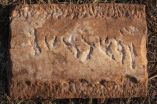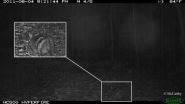(Press-News.org) Originally endemic to the Atlantic Coast of North America, over the past 30 years Dyspanopeus sayi has been involuntarily introduced in the UK, France, the Netherlands, the Black Sea and the Adriatic Sea. A study shows that in recent years the sea crab has established itself along the Western Mediterranean Coast.
A team of Spanish and German researchers have recorded the first American Dyspanopeus sayi sea crab in the bay of Els Alfacs in the Ebro Delta (Spain). Both sexes were captured along with many ovigerous females (carrying eggs) in different areas and different times. This way, it was confirmed that as a species they are well established and reproduce along the Western Mediterranean coast without problems.
This new invading crab is endemic to the North-East coast of North America stretching from Canada to Florida. In the last few decades it has reached the UK, France, the Netherlands, the Black Sea and the Adriatic Sea and can now be seen in the westernmost part of the Mediterranean. Researchers are juggling with various hypotheses on their invasion.
"It would have been very difficult for them to arrive to Europe on their own without human involvement. They could have arrived at the Ebro Delta on sea transport or other trade exchanges," as outlined to SINC by Guillermo Guerao, co-author of the study that has been published in the Scientia Marina journal and researcher at Spain's Food and Agriculture Research and Technology Institute (IRTA).
Another possibility is that a few specimens reached the Western Mediterranean from the population in Italy. We would then be looking at a secondary introduction. "But to get more information we would need to carry out an extensive genetics study on the different native and non-native Dyspanopeus sayi populations," adds Guerao.
According to the study, the first identified specimens were captured by hand while researchers were gathering Carcinus aestuarii, the native crab species very abundant in the Ebro Delta. They also appeared in the bay of Els Alfacs amongst the catches of small-scale fisherman from Sant Carles de la Ràpita (Tarragona).
A potential danger for the native fauna
"Dyspanopeus sayi is a species that can withstand temperature and salinity changes very well. It can therefore colonise shallow coastal areas (as shallow as 46 metres) and, more specifically, estuaries," explains the biologist from IRTA. It does not live in fresh water. Therefore, in the Ebro Delta they have only been found in the bay of Els Alfacs and it has not yet been confirmed whether they are present in the bay of Fangar.
This species of sea crab has a marked sexual dimorphism: the males are bigger than the females. The crabs feed on bivalve molluscs like mussels and clams and they use their strong claws to break shells. As predators they hunt at dusk or in the darkness.
Up until now the researchers have not detected any significant effect on the native fauna of the bay of Els Alfacs but monitoring with regular sampling in the area has not yet been carried out to confirm this.
However, as Guerao states, "considering their diet (bivalve molluscs) and the effect that this species has had in other places (in the Adriatic Sea it has exterminated some species like the Mytilus galloprovincialis mussel and the Ostrea edulis oyster) it would be interesting to regularly monitor the dynamic of Dyspanopeus sayi in the Ebro Delta."
INFORMATION:
Reference:
Schubart, Christoph D.; Guerao, Guillermo; Abello, Pere. "First record and evidence of an established population of the North American mud crab Dyspanopeus sayi (Brachyura: Heterotremata: Panopeidae) in the western Mediterranean" Scientia Marina 76(1): 79-85 DOI: 10.3989/scimar.03361.16ª, 2012.
A new invading sea crab reaches the Ebro Delta
2012-05-28
ELSE PRESS RELEASES FROM THIS DATE:
First study to suggest that the immune system may protect against Alzheimer's changes in humans
2012-05-28
Recent work in mice suggested that the immune system is involved in removing beta-amyloid, the main Alzheimer's-causing substance in the brain. Researchers have now shown for the first time that this may apply in humans.
Researchers at the Peninsula College of Medicine and Dentistry, University of Exeter with colleagues in the National Institute on Aging in the USA and in Italy screened the expression levels of thousands of genes in blood samples from nearly 700 people. The telltale marker of immune system activity against beta-amyloid, a gene called CCR2, emerged as ...
Autopsy of an eruption: Linking crystal growth to volcano seismicity
2012-05-28
How processes below a volcano are linked to seismic signals at the surface is described by scientists from the petrology group of the Ruhr-Universität Bochum and their colleagues from Bristol in a paper published today in Science. They analyzed the growth of crystals in the magma chamber and used results obtained from the monitoring of seismic signals. The research could ultimately help to predict future volcanic eruptions with greater accuracy.
Like tree rings: Crystals in a magma chamber
A few kilometers below the volcano a liquid reservoir exists, the magma chamber, ...
Picture release: More than meets the eye
2012-05-28
VIDEO:
Depicting each copy of COPI as a triangle, the different arrangements of these building blocks become easier to spot.
Click here for more information.
These spheres may look almost identical, but subtle differences between them revealed a molecular version of the robots from Transformers. Each sphere is a vesicle, a pod that cells use to transport materials between different compartments. The images, produced by Marco Faini from John Briggs' lab at the European Molecular ...
Oldest Jewish archaeological evidence on the Iberian Peninsula
2012-05-28
On a marble plate, measuring 40 by 60 centimetres, the name "Yehiel" can be read, followed by further letters which have not yet been deciphered. The Jena Archaeologists believe that the new discovery might be a tomb slab. Antlers, which were found very close to the tomb slab in the rubble gave a clue to the age determination. "The organic material of the antlers could be dated by radiocarbon analysis with certainty to about 390 AD," excavation leader Dr. Dennis Graen of the Jena University explains. "Therefore we have a so-called 'terminus ante quem' for the inscription, ...
70 percent of women use contraceptives during their first sexual encounter
2012-05-28
VIDEO:
Contraceptive use in Spain during the first sexual encounter is similar to other European countries. However, there are some geographical differences between Spanish regions: women in Murcia use contraceptives less...
Click here for more information.
Contraceptive use in Spain during the first sexual encounter is similar to other European countries. However, there are some geographical differences between Spanish regions: women in Murcia use contraceptives less (55.8%) ...
Copy of the genetic makeup travels in a protein suitcase
2012-05-28
The blueprint of all living beings is stored in their genetic material. In higher organisms this is stored in the well-protected cell nucleus. "Here a kind of copier works around the clock to make copies of the information needed at the time," says first author Jan Peter Siebrasse from the Institute for Physical and Theoretical Chemistry at the University of Bonn. The copies contain the information which the cells need to produce vital enzymes or other cell building materials. These copies consist of messenger RNA which travels on random paths to the membrane of the cell ...
Inherited DNA change explains overactive leukemia gene
2012-05-28
COLUMBUS, Ohio – A small inherited change in DNA is largely responsible for overactivating a gene linked to poor treatment response in people with acute leukemia.
The study by researchers at the Ohio State University Comprehensive Cancer Center – Arthur G. James Cancer Hospital and Richard J. Solove Research Institute (OSUCCC – James) focused on a gene called BAALC. This gene is often overactive, or overexpressed, in people with acute myeloid or acute lymphoblastic leukemia, and it indicates that the disease is likely to respond poorly to standard therapy.
This study ...
World Health Assembly endorses new plan to increase global access to vaccines
2012-05-28
Geneva, Switzerland – May 25, 2012 – Ministers of Health from 194 countries at the Sixty-fifth World Health Assembly today endorsed a landmark Global Vaccine Action Plan (GVAP), a roadmap to prevent millions of deaths by 2020 through more equitable access to existing vaccines for people in all communities.
The GVAP was coordinated by the Decade of Vaccines Collaboration, a group of leading international vaccine experts, and represents the collective vision of hundreds of global health stakeholders to extend the full benefits of immunization to all people, regardless of ...
Cancer may require simpler genetic mutations than previously thought
2012-05-28
Chromosomal deletions in DNA often involve just one of two gene copies inherited from either parent. But scientists haven't known how a deletion in one gene from one parent, called a "hemizygous" deletion, can contribute to cancer.
A research team led by Stephen Elledge, a professor in the Department of Genetics at Harvard Medical School, and his post-doctoral fellow Nicole Solimini, has now provided an answer. The most common hemizygous deletions in cancer, their research shows, involve a variety of tumor suppressing genes called STOP genes (suppressors of tumorigenesis ...
UMass Amherst wildlife researcher photographs rare Sumatran rabbit
2012-05-28
AMHERST, Mass. – Using camera traps, wildlife researchers including doctoral candidate Jennifer McCarthy and environmental conservation professor Todd Fuller of the University of Massachusetts Amherst recently captured photographs of one of the rarest animals on earth, the Sumatran striped rabbit. They say it may now be found only in two remote national parks on the Indonesian island.
Their pictures and other observations are reported in the current issue of Oryx, The International Journal of Conservation. The rare rabbit was first photographed in Kerinci Seblat National ...




